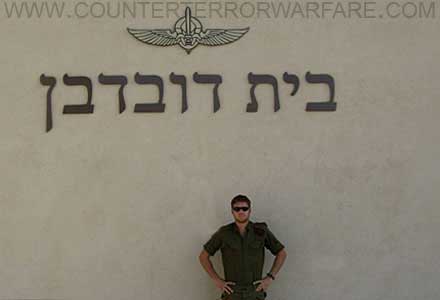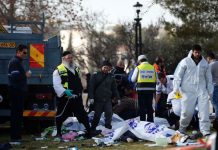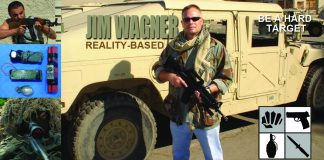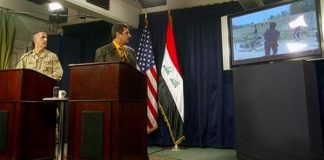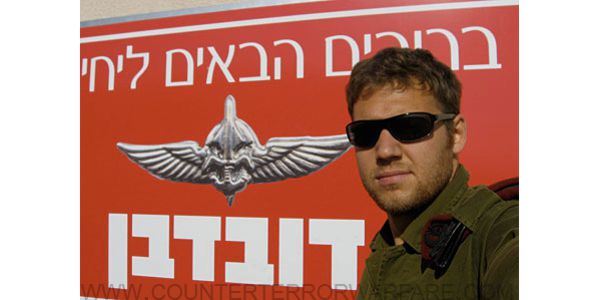 Duvdevan, a SF (Special Forces) group within the IDF (Israeli Defense Forces) is considered the most elite CT (counter terrorist) unit in Israel. Formed in 1987, they work primarily undercover in urban Palestinian areas. Their specialty is infiltration and arrests, and capturing wanted militants. Essentially they pose as Palestinians with the use of disguises, knowledge of the language and behaviorism, which they receive in training. To truly understand their place within the IDF, it’s important to understand where and how they fit within the basic structure of Israel’s military.
Duvdevan, a SF (Special Forces) group within the IDF (Israeli Defense Forces) is considered the most elite CT (counter terrorist) unit in Israel. Formed in 1987, they work primarily undercover in urban Palestinian areas. Their specialty is infiltration and arrests, and capturing wanted militants. Essentially they pose as Palestinians with the use of disguises, knowledge of the language and behaviorism, which they receive in training. To truly understand their place within the IDF, it’s important to understand where and how they fit within the basic structure of Israel’s military.
Basic Structure of the IDF
The overall basic structure of the IDF is: navy, air force, and police, all fall under the command of the army. Additionally, there are also sub-groups. The navy has its version of the SEALS, called S-13. The air force has it’s own para-rescue unit called “669.” The police has the “YAMAM” which is a combination of SWAT and hostage rescue. The army has several adjunct units which are: MATKAL, which deals with intelligence gathering, international hostage rescue and long range reconnaissance (similar to Delta Force).
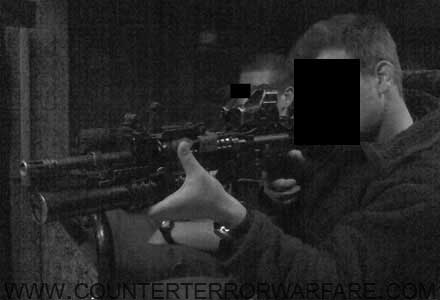
PALSAR (similar to the Rangers) is primarily an intelligence unit, they are also involved in ambushes and long range reconnaissance on a brigade level. The EGOZ is a guerrilla and anti-guerrilla warfare unit. They utilize ambushes, in particular against the Hezbollah. YAMAS, is an undercover police unit; and finally Duvdevan: is a CT (counter terrorist) unit that makes arrests through infiltration.
With the exception of Duvdevan, all of these units in Israel have a wartime mission as well as day-to-day missions.
History of Duvdevan
In 1987 the first Palestinian uprising (Intifada) broke out and ushered in a new wave of terrorism in the New Territories. The IDF faced thousands of heavily armed terrorists that enjoyed the full backing and support of the Palestinians. Due to an overly compromised public relations image in the world press a full-scale military retaliation was out of the question.
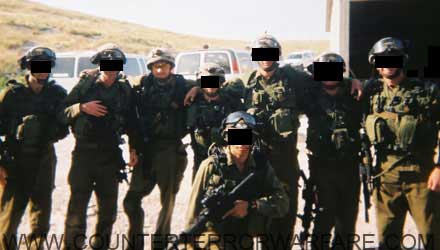
In 1987 the first Palestinian uprising (intifada) began in the Jabalia refugee camp and quickly spread through Gaza, the West Bank and Jerusalem. The Palestinians organized an effective resistance movement that targeted all Israeli’s including civilians, and included car, bus and suicide bombings. In addition the Palestinians erected barricades throughout the territories, held boycotts, general strikes and refused to pay taxes. During the course of the first intifada (1987-1993) over 160 Israeli’s were killed.
In the beginning of the conflict, the IDF employed traditional SF tactics which turned out to be a complete disaster. The SF simply weren’t prepared to handle these situations. During the daytime, when the IDF tried to perform their duties they were surrounded by hundreds of violent Palestinians that often erupted into full-scale riots; and by the time they reached their targets, they were long gone.
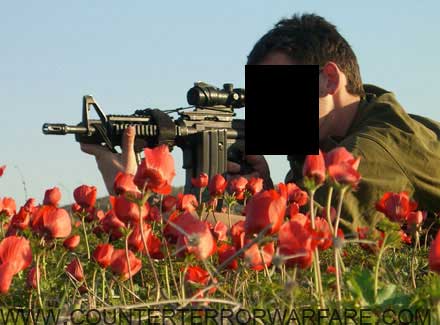
At night the situation was worse. The soldiers were easily identified miles away by their unique weapons, lights and uniforms. When they arrived at their targets, the houses would be empty.
A Mistaravim (undercover) unit was needed that could perform fast and effective hit-and-run missions deep into the territories. Unlike in the 1940’s when the Mistarvim unit was used as an intelligence gathering tool and also to covertly move weapons and equipment, the new Mistaravim were designed as pure CT (counter terrorist) units. The first members came from the S-13 (Israeli Navy Seals), that is illustrated as an anchor in Duvedun’s logo.
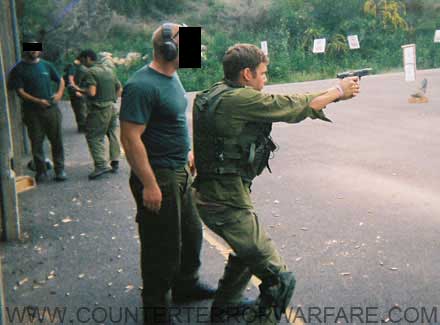
Duvdevun Today
The unit is actually recognized with only a unit identity number and Duvdevan is simply the nickname given to the unit. The commando units of the IDF are known as the “Katzefit”, or “cream” the best, in English. In Duvdevan’s short 20-year history it has stood above and beyond the traditional special units of the IDF and was thus nicknamed; the only thing that goes on cream is a cherry. The word Duvdevan means cherry.
In 2002, Duvdevun underwent some major changes. They were reorganized after several internal problems, i.e. friendly fire incidents on a mission, weather related deaths, etc.
These changes are as follows:
1. The unit basic training was relocated to the paratroopers base – it used to be held independently at the Adam base along with rescue Unit 669 and Oketz (dog handling unit). After 2 soldiers died in training, basic training was delegated to the infantry. Basic training is 7 months long and is done with the Tzanchanim (paratroopers).
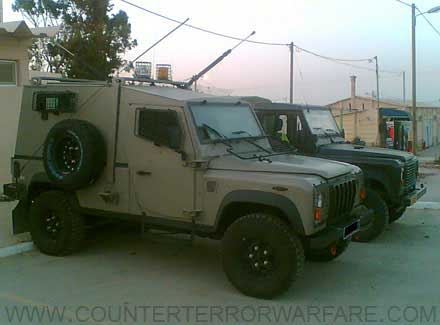
2. Special units within Duvdevan were formed but remain classified.
3. The units base was relocated and newly built. It now stands alone and independently in a secret location. Unlike Duvdevan – most IDF units have their base within a larger base.
4. Finally the selection process to enter the unit and start the year and a half training process, was changed from an independent secret selection process to a two phase motivation test.
The first test when candidates are still civilians, lasts 24 hours, the second test lasts 5 days after the men are drafted into the army, followed by interviews.
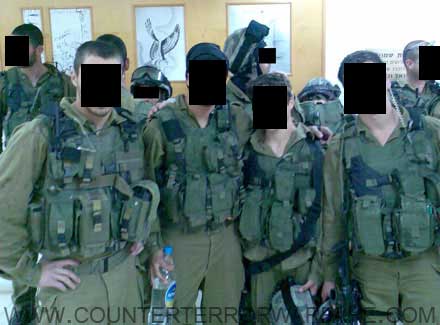
The unit prides itself on being the spearhead of Israeli counter terror operations. In 2002 the unit was awarded as such by the prime minister for having the most significant effect on the war on terror. The Duvdevan unit is regarded as one of the world’s most successful counter-terror units. In January 2008, the unit successfully assassinated a major Islamic Jihad commander in the West Bank.
Garret Machine was a member of Duvdevan for three years and his duties included: arrests, raids, ambushes, searches, emergency medicine, trainer of emergency medicine, firearms instructor.
RF: What does your unit do exactly?
Garret: Duvdevun is a special forces unit within the Israeli Defense Forces, directly subordinate to the West Bank Division. Duvdevan is particularly noted for conducting undercover operations against Palestinian militants in urban areas within the PA controlled West Bank. During these operations, Duvdevan soldiers typically drive modified civilian vehicles and wear Arab civilian clothes as a disguise. The unit can perform high-risk arrests, raids, targeted assassination, kidnappings and a range of other urban warfare operations.
RF: How is that different than other special units?
Garret: The unit is unique in several ways: it is the only IDF unit (not including police units) that has no war time mission, just day-to-day hit and run operations. In addition the unit, unlike other SF units, can operate in more than one place at once, and can operate independently. This means providing its own intelligence, backup, rescue, medical teams, extraction, snipers, demolitions, etc.
RF: Under what command is your unit?
Garret: The unit falls under the command of the Judea and Samaria division (West Bank Division) of the IDF. This means the unit is under an area command, not a manpower or brigade command like every other Israeli army unit.
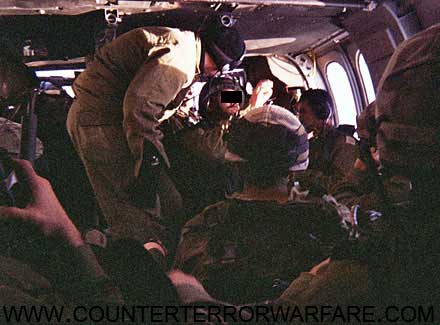
RF: Isn’t the IDF modeled after the British Army?
Garret: Yes it is, and it allows us to operate anywhere in the country and nowhere specific, unlike other special units that are attached to brigades, like Egoz (the mountain jungle) belongs to the Golani Brigade.
RF: What are other units?
Garret: There’s also Maglan, an elite unit within the paratroopers, they are tank hunters.
RF: Is there any overlap with the different units?
Garret Yes there is overlap between all Israeli forces, for example, Oketz (dogs) work with all Israeli special operations units providing canine assitance. The Lotar (counter terror school) qualifies all SF units for hostage rescue and both are in Adam Base.
RF: Are the uniforms of the CT units identifiable?
Garret: Only Duvdevan and Sayeret Matkal (similar to Delta Force) are authorized to wear their uniforms without identifying shoulder tabs. Duvdevan is most similar to the Yamam (hostage rescue, also a CT unit).
RF: Do you train with foreign units?
Garret: We train with the Green Berets
RF: What are typical missions likes like?
Garret: Missions can last between 15-min to 3 days. They are intense and aggressive, and often times tiring and taxing. I have been on about 100 missions with the unit and that’s about half of the units yearly work overall. I would describe missions as fun, scary, exciting, important, dangerous, rewarding and fulfilling. I love the work of the unit and feel it is wholly important to protecting western values. Missions are what every soldier dreams about from the day he joins the unit. After you first mission you know why.
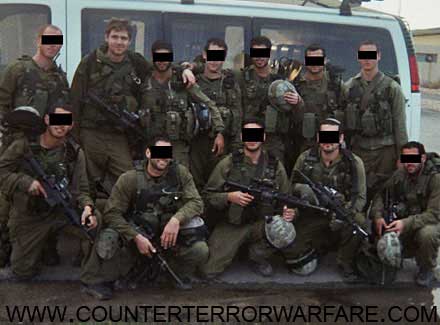
RF: What kinds of weapons do you use?
Garret: Well I consider the MP-5 SD is best hostage rescue weapon because it’s accurate, reliable, it won’t jam, it can be configured in 9mm, and probably the best engineered silenced weapon from the factory.
RF: What are your primary weapons?
Garret: Colt M-16/AR-15 M4 commando. It the shortest weapon in the m16 family of weapons. It’s a great weapon. Mine has never jammed, can. Sometimes we use the micro Uzi 9mm. it is one of my favorite weapons due to the concealability, compact size, speed and accuracy. I love it. We also use the sig sauer 228 9mm pistol for backup and civilian carry. Aswell as Glocks.
RF: So you concentrate on certain weapons?
Garret: We learn to use a weapon system instead of a large selection of weapons. The armory only issues certain weapons. Everyone needs to be expert with: all glock pistols, all sigs 228’s, all M16 variants, all Uzi variants, standard, micro and mini, and sawed off 12-guage shotgun (Remington Autoloader)
RF: What do you use shotguns for?
Garret: We use shotguns for:
1) opening doors (with a slug)
2) with a bean bag for crowd control it doesn’t puncture the skin but drops them fast
RF: Do the units carry knives?
Garret: Yes, all types of knives, K-Bars, Bussie’s etc. and of course folders, they carry any knives they want. Spyderco is very popular.
RF: What’s the training like when you first get into your unit?
Garret: For every infantry person in the army the training takes between 7 months and 2 years, depending on the unit.
4 months basic infantry training in the Mitkan (facility) Adam army base – the IDF Special Training Center. This is the same for all IDF combat units. But Duvdevan does this training separately.
Two and a half months of advanced infantry training in the same base. Also identical for other combat units. This is for your war qualification known as “07” you are qualified to represent Israel in a war (infantry).
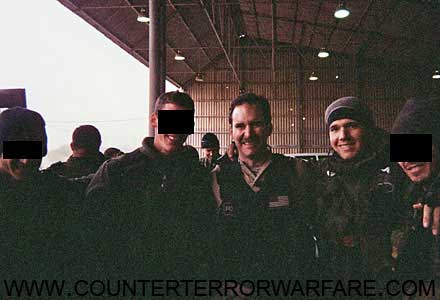
RF: Is there additional training for Duvdevan?
Garret: Yes we have specific training separate and apart from the other units. Two months of basic training, which focuses on advanced urban navigation exercises (no GPS allowed) geographical locations and getting from point A-B. Then the CT training begins. This part is very intensive and designed to weed out the weak. The training includes intensive hand-to-hand training. Part of the training is aggression training, toughen you up, for hostage rescue purposes.
Six weeks CT course in IDF Counter Terror Warfare School in Mitkan Adam base (this is Lotar training) We have the longest course in the school out of all the SF units. With 2 hrs aggression training daily.
One month advanced inner-unit CT training with the unit’s own instructors. This is where we learn guerilla warfare. A 4-month Mistaravim (undercover training) course, which covers everything from learning the Arabic traditions, Arabic language and their way of thinking, to civilian camouflage (hair dying, contact lenses, Arab clothing etc).
Additional 1-month courses for specializations – sniper, medic, demolitions, driving and different instructors courses. The rest of the time is devoted to advanced urban combat techniques.
RF: What kind of hand-to-hand training do you receive?
Garret: We use the original form of krav maga. Not the commercial stuff franchised in the United States. There are no belts, ranks or typical dojo structures. Its mainly 70 % aggression training. A typical class goes like this: enter the training facility in shorts white shirt with your name written on it in marker, put on light boxing gloves, face mask, and shin pads and crotch protector. Immediately the first command is to do sprints across the training facility is given, then pushups on the fists, sit-ups, etc. This goes on about 15 min. then we are all in pushup position on our fists and lined up against the wall the instructor will hit us if we go down.
Next recruits are made to stand in a tight shoulder to shoulder order and sprint 6 meters, 6 times, wall to wall; smashing into each other all the way. Then everyone forms a tight group 3 wide by 4 deep and one man runs through the pack and smashes out to the other side. This is an exercise designed for smashing through a crowd to get to a hostage.
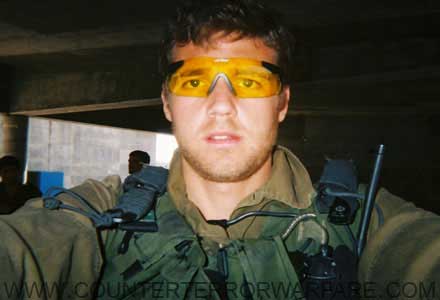
Next a strap is tied around the recruit’s chest and they are made to weave in between punching bags (a row of 10 bags) all the while you are restrained by someone holding the strap. At the same time there are two lines on each side of the bags with people punching and kicking you the whole way. When you get to the last bag you need to go all out on it for 30 seconds punching while the instructor kicks you in the legs and finally a fresh man is presented to fight you.
The new man basically beats the crap out of you while you try to hit back but by this time you are so exhausted that your strikes have very little power left.
Some classes are all fights, but never one-on-ones, its always 3 on 1. First you fight one guy for about 40 seconds then he steps back and a fresh one steps in, he fights you for another 30 seconds then a third man comes in fresh to kick your ass. Later on in the training, some classes review techniques. But all the techniques are basic combos of boxing and low kicks with maximum force every time. To say there are injuries in this training is an understatement.
Then there is the knife defense training. I believe in the techniques, if a man came at me with a knife and was not a trained knife fighter and I was with no weapon I would kill him. Sticks, same, guns in arms length, same. We learn how to fight with our M16’s and pistol’s without ammo, that’s the basics. We learn how to arrest and search a subject in krav maga, how to remove sentries with a knife, cord, and hands. We learn how to kidnap, and most of all we learn how to take a real beating and keep fighting, remember it’s not a bar it’s Gaza.
RF: What’s your life motto?
Garret: The same as my former unit, “For by the clever deception thou shalt wage war!”
Garret Machine Biography
- Born and raised in Miami Florida
- Attended HS in an East Coast Military academy
- Attended UF, graduated with BA in Business Admin.
- Went to Israel for first time on 8/02, joined IDF on 11/02
- 08-09 worked as bodyguard for ministry of defense
- 08-09 received Masters degree from IDC (Interdisciplinary Center)
- In CT unit and National Security
- Joined Israel police (Yamam) until Jan 2010
- Now living in FLORIDA
- Future goals: Training and Security Consulting
Garret Machine is available for security and training seminars and consultations.
